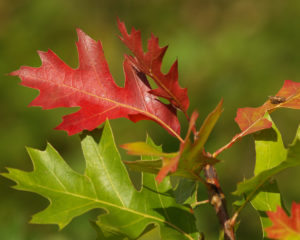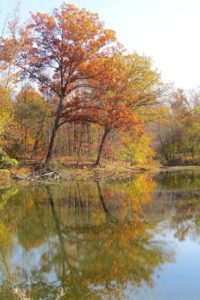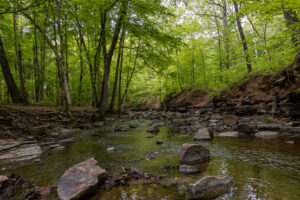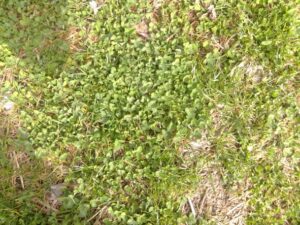By Naturalist Casey Smith I love fall. I love how fall smells. I love the cooler temperatures, football, and comfy sweaters. It’s a time when animals start storing food for winter and birds migrate south. But most of all I love seeing leaves change color. Did you know the colors – those reds, oranges, and yellows – have been inside the leaves all year long? We just couldn’t see those colors because they are masked by chlorophyll, which gives leaves their green color. It’s like a secret just waiting to show itself.

During spring and summer, the leaves are food factories, absorbing sunlight and using it to transform carbon dioxide and water to sugars and starches. But in the fall, the days get shorter and the temperatures get cooler. The leaves stop making food and the chlorophyll breaks down causing the green color to disappear. As you stand in awe of the myriad of colors, you’re seeing a chemical reaction happening inside the leaves. Those chemical reactions are also responsible for the varying amount of colors we see in fall. When chlorophyll residue mixes with other pigments left in the leaf, we get red, orange, yellow, brown, and even purple. The intensity of fall colors can also be influenced by temperature and weather. Rain and overcast skies can increase the intensity, while freezing temperatures will weaken it. The warm temperatures we’ve seen in September and October may also weaken fall colors this year. 
Seeing the color of the leaves could be an indicator of the species of tree you’re seeing. Some trees, like the red maple and yellow poplar, are named because of their primary fall leaf color. Trees can even express several colors simultaneously as the season progresses. I’ve noticed that walnut trees are often the first to turn, changing to yellow, and the first to lose their leaves. Tulip trees, sycamores, gingkoes, and beech trees also turn yellow or orange. We get to see brilliant reds in dogwoods, persimmon, poison ivy, and buckeyes. (Pond photo by Rick Binkowski.)
Be sure to take time this fall to visit the parks and check out the fall colors. Driving the tree lined road to Hogback Ridge Park is always beautiful in fall and I also enjoy walking at Gallant Woods Park, where we have some of the oldest stands of forest in our park system.








